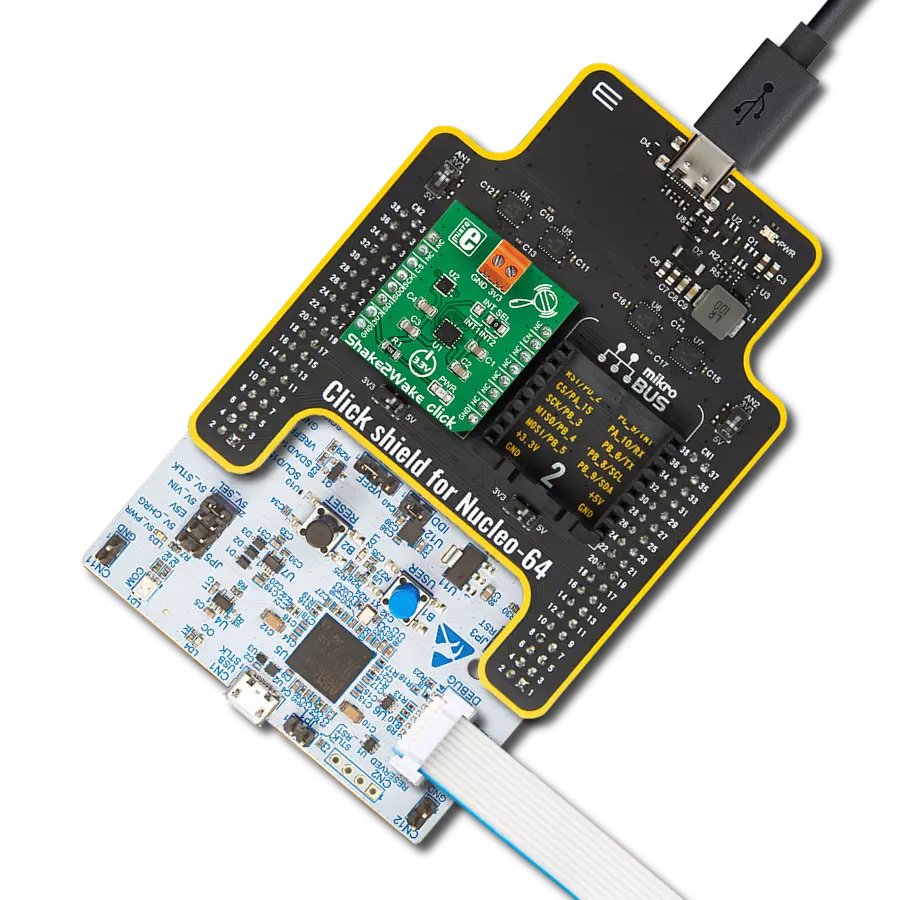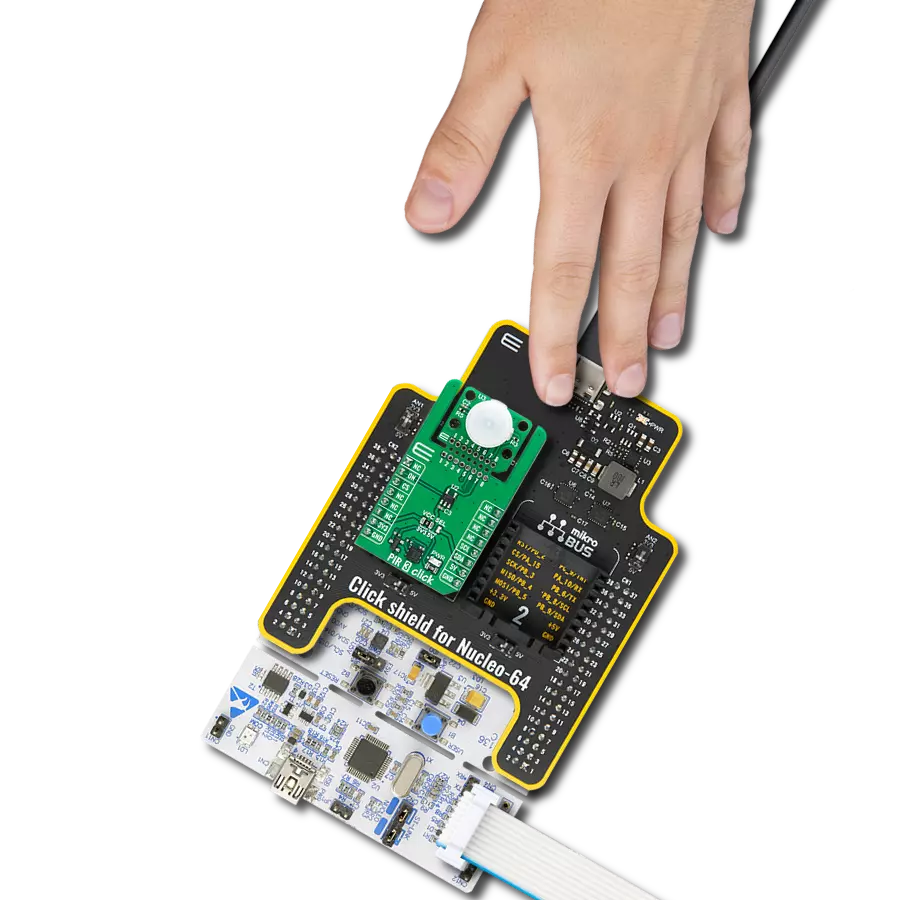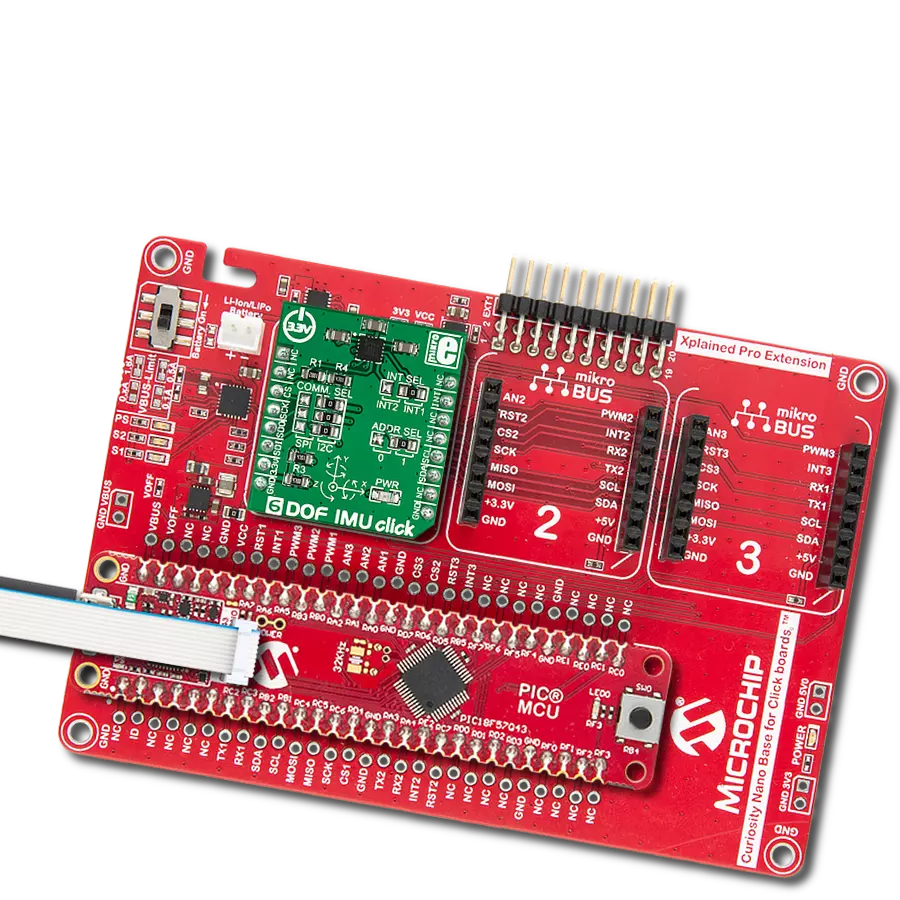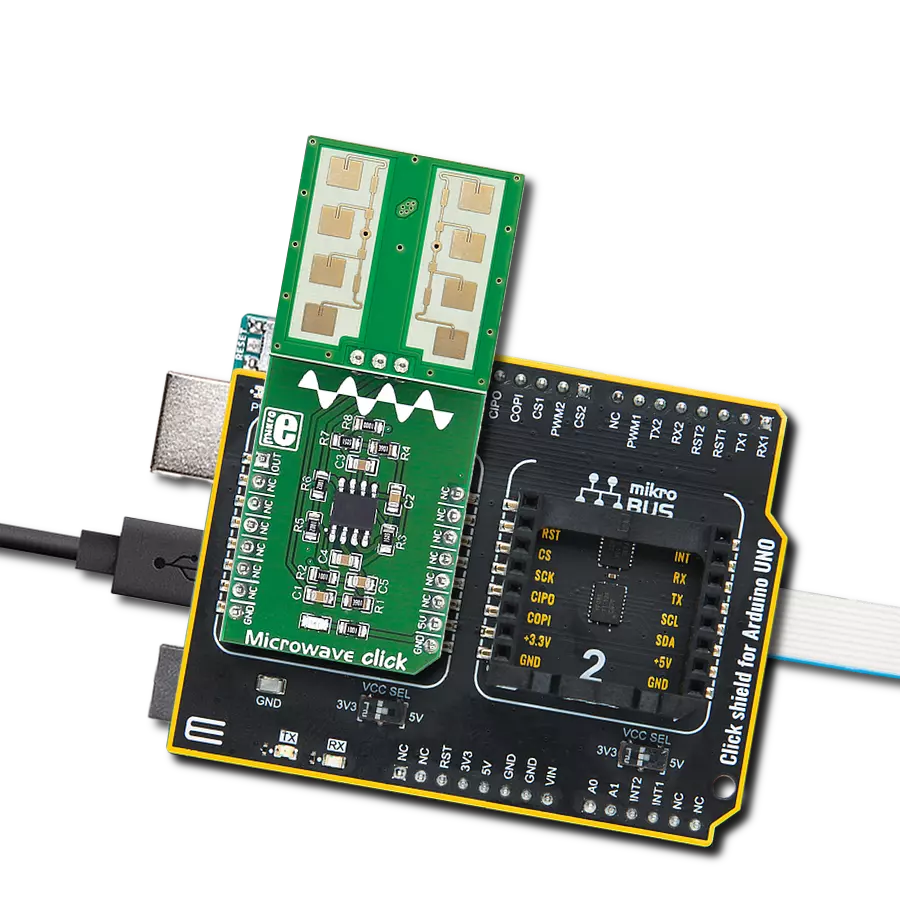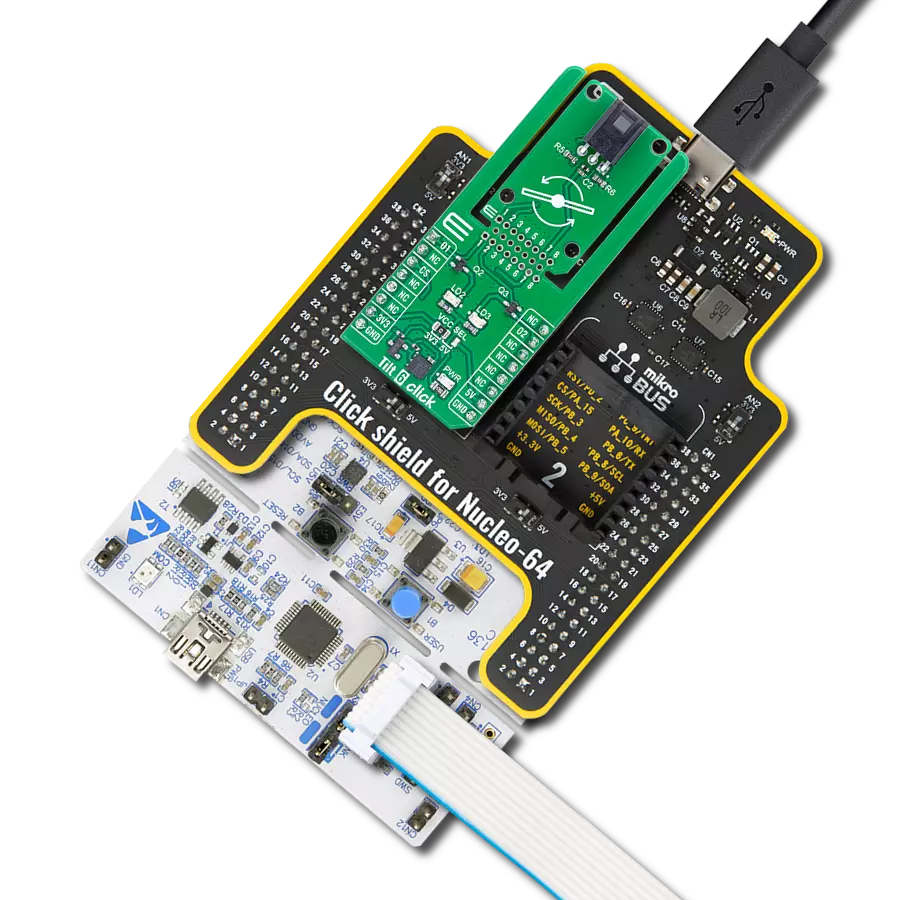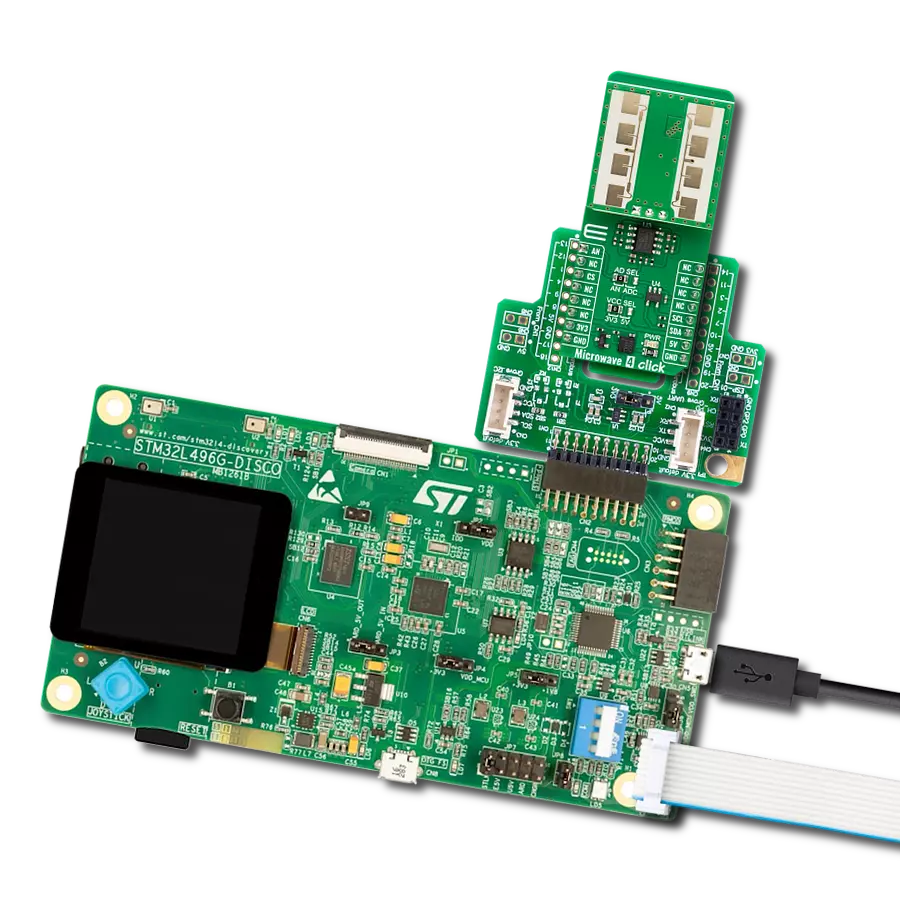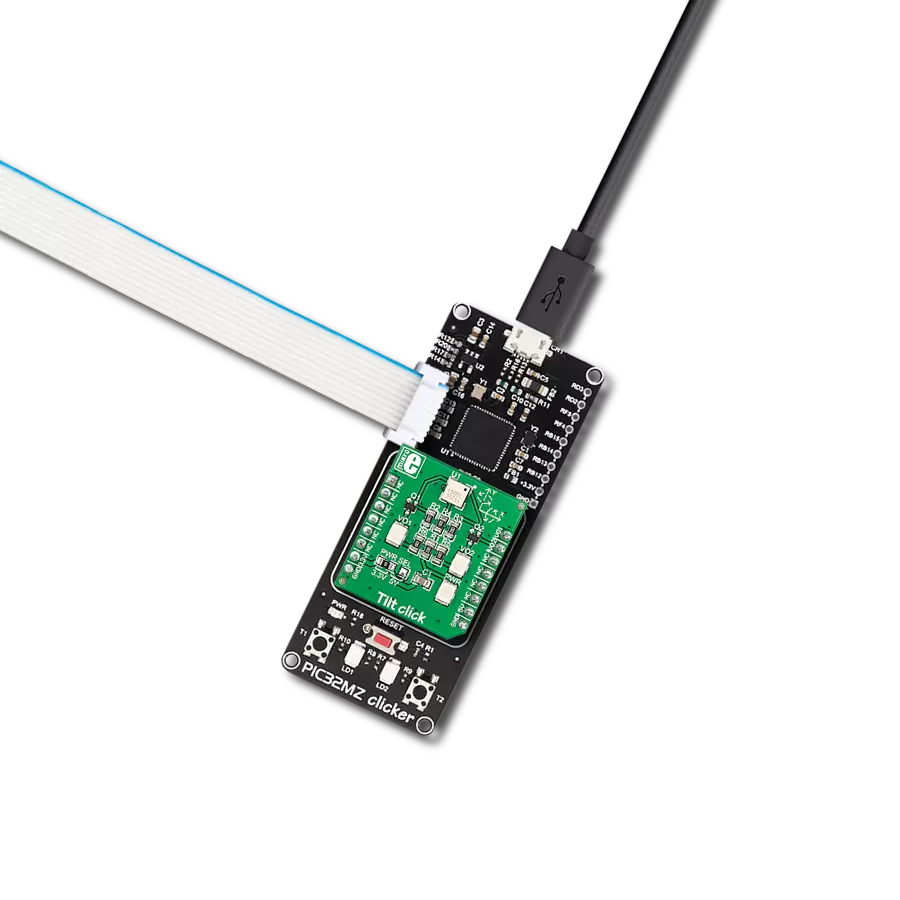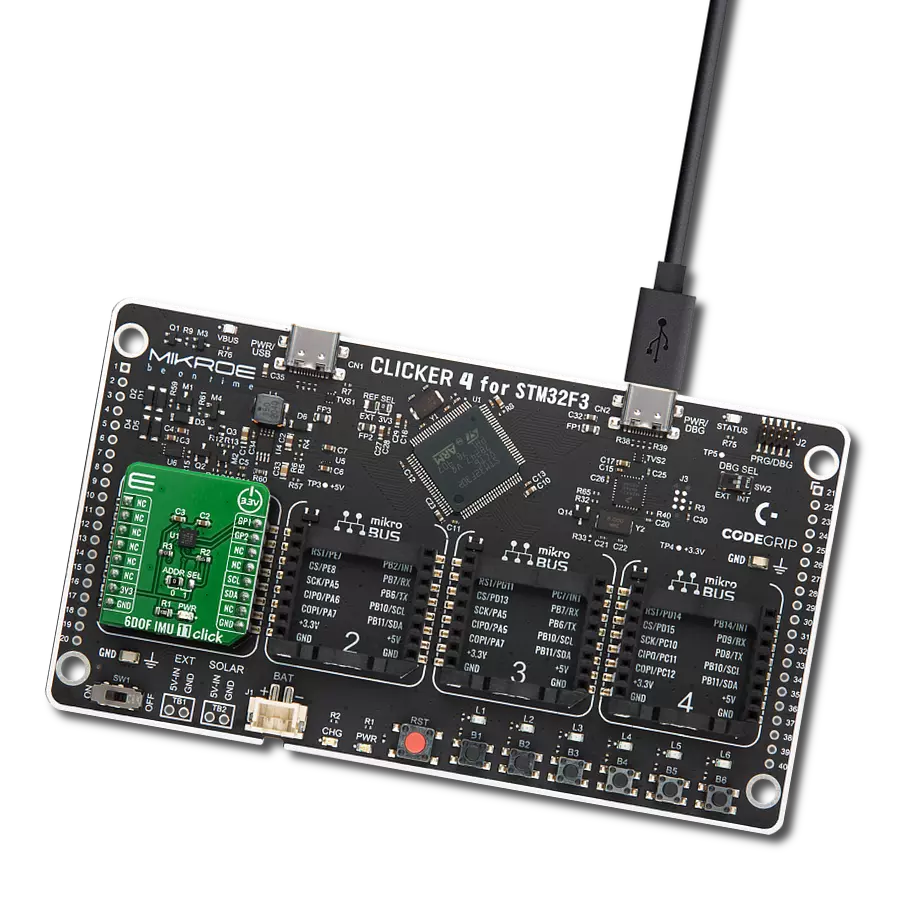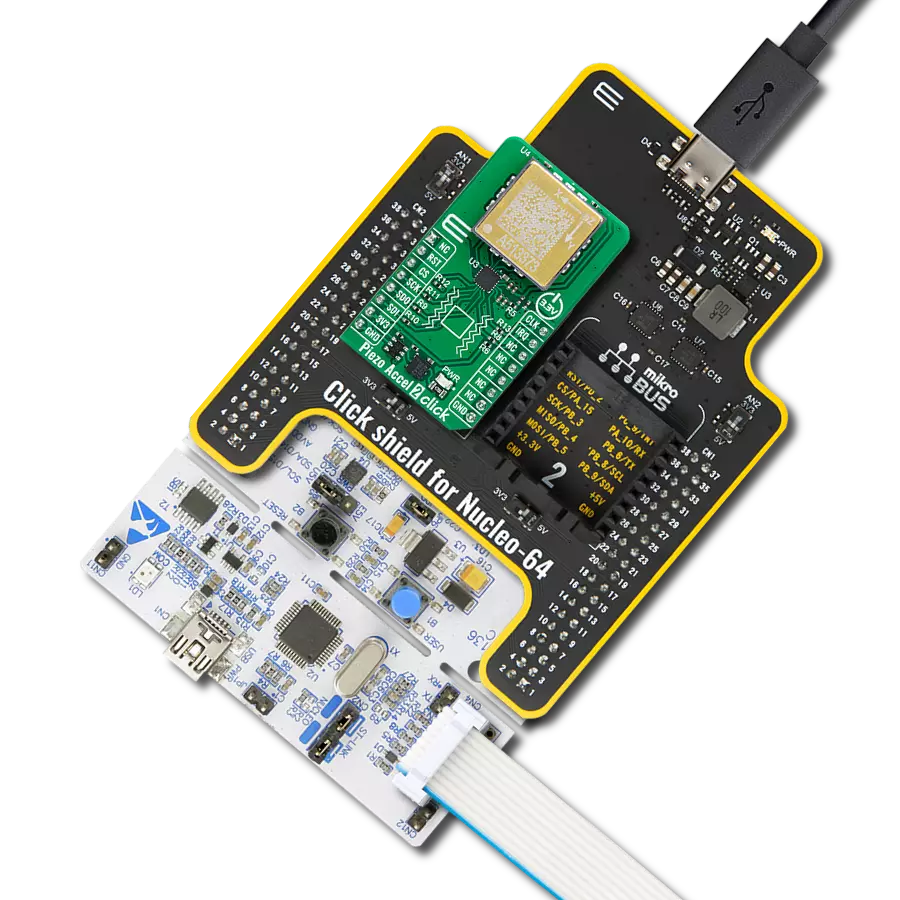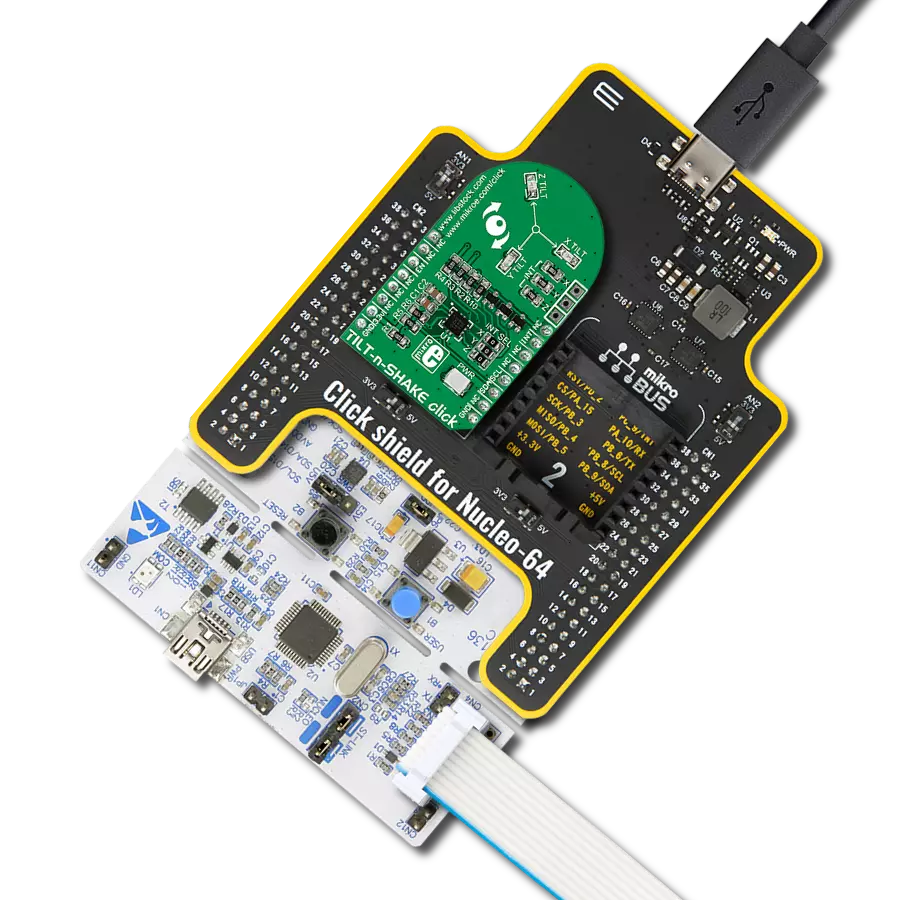By detecting gravitational forces, accelerometers aid in determining an object's orientation with respect to Earth's gravitational field, providing valuable information for navigation and alignment applications
A
A
Hardware Overview
How does it work?
Accel 11 Click is based on the BMA456, a digital triaxial acceleration sensor from Bosch Sensortec. This sensor has many features ideally suited for wearables, handheld, and IoT applications, offering a good balance between the performance and the power consumption. One of its key features is its extremely low power consumption, which makes it perfectly suited for such applications. There are several power modes that the BMA456 device can use. While in Low Power mode, the device consumes the least power, but access to some features is restricted. More information can be found within the BMA456 datasheet. The BMA456 sensor can measure acceleration within ranges of ±2 g, ±4 g, ±8, and ±16 g. It can output the measurement data using the Output Data Rate (ODR) from 0.78Hz (Low Power mode) up to 1600Hz (Performance mode). A high-precision analog front end facilitates highly sensitive MEMS, featuring a 16-bit A/D Converter. It allows very high output accuracy, even during low amplitude changes. This makes the sensor particularly sensitive and accurate with movements that
generate relatively low acceleration signals. However, using a highly sensitive MEMS makes the BMA456 prone to damage caused by extremely high g-forces (10,000g for less than 200µs). Acceleration data is available in 16-bit format from the data registers and the internal FIFO buffer of 1kb. The FIFO buffer can be used for more complex calculations or timed readings, reducing the traffic on the communication interface. The interrupt engine facilitates the FIFO buffer, triggering an interrupt for two FIFO events: the watermark event and the FIFO buffer full event. FIFO buffer allows optimization within the firmware that runs on the host MCU. Besides the acceleration MEMS and complementary analog front-end circuit, the BMA456 sensor has an integrated temperature sensor. It is updated every 1.2s and sampled to an 8-bit value (complement of 2’s format). Interrupts can be triggered for many different events. Some basic events include the data-ready interrupt event and aforementioned FIFO events, while so-called feature engines can trigger an interrupt for any of the detected
motion/movement events, including step detection/counter, activity recognition, tilt on the wrist, tap/double tap, any/no motion, and error event interrupt. The extensive interrupt engine can use two programmable interrupt pins. Depending on settings in appropriate registers, these pins can be assigned with any interrupt source and can be either LOW or HIGH on interrupt. These two pins are routed to the INT and AN pin of the mikroBUS™ and are labeled IT1 and IT2, respectively. Accel 11 click offers two communication interfaces. It can be used with either I2C or SPI. The onboard SMD jumpers labeled COMM SEL allow switching between the two interfaces. Note that all the jumpers must be positioned in the I2C or SPI position. When the I2C interface is selected, an additional SMD jumper labeled ADDR SEL becomes available, determining the least significant bit of the BMA456 I2C address. The Click board™ should be interfaced only with MCUs that use logic levels of 3.3V.
Features overview
Development board
Flip&Click PIC32MZ is a compact development board designed as a complete solution that brings the flexibility of add-on Click boards™ to your favorite microcontroller, making it a perfect starter kit for implementing your ideas. It comes with an onboard 32-bit PIC32MZ microcontroller, the PIC32MZ2048EFH100 from Microchip, four mikroBUS™ sockets for Click board™ connectivity, two USB connectors, LED indicators, buttons, debugger/programmer connectors, and two headers compatible with Arduino-UNO pinout. Thanks to innovative manufacturing technology,
it allows you to build gadgets with unique functionalities and features quickly. Each part of the Flip&Click PIC32MZ development kit contains the components necessary for the most efficient operation of the same board. In addition, there is the possibility of choosing the Flip&Click PIC32MZ programming method, using the chipKIT bootloader (Arduino-style development environment) or our USB HID bootloader using mikroC, mikroBasic, and mikroPascal for PIC32. This kit includes a clean and regulated power supply block through the USB Type-C (USB-C) connector. All communication
methods that mikroBUS™ itself supports are on this board, including the well-established mikroBUS™ socket, user-configurable buttons, and LED indicators. Flip&Click PIC32MZ development kit allows you to create a new application in minutes. Natively supported by Mikroe software tools, it covers many aspects of prototyping thanks to a considerable number of different Click boards™ (over a thousand boards), the number of which is growing every day.
Microcontroller Overview
MCU Card / MCU
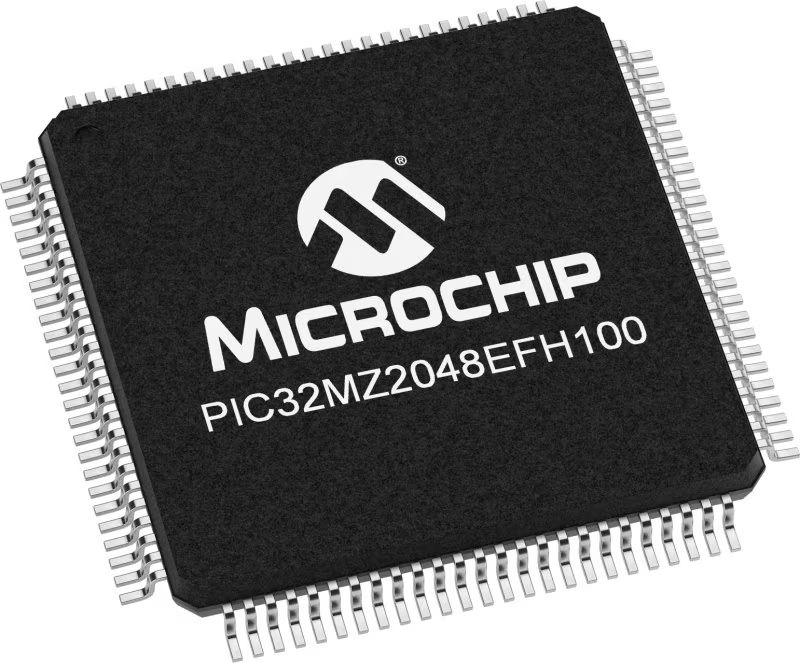
Architecture
PIC32
MCU Memory (KB)
2048
Silicon Vendor
Microchip
Pin count
100
RAM (Bytes)
524288
Used MCU Pins
mikroBUS™ mapper
Take a closer look
Click board™ Schematic

Step by step
Project assembly
Track your results in real time
Application Output
1. Application Output - In Debug mode, the 'Application Output' window enables real-time data monitoring, offering direct insight into execution results. Ensure proper data display by configuring the environment correctly using the provided tutorial.

2. UART Terminal - Use the UART Terminal to monitor data transmission via a USB to UART converter, allowing direct communication between the Click board™ and your development system. Configure the baud rate and other serial settings according to your project's requirements to ensure proper functionality. For step-by-step setup instructions, refer to the provided tutorial.

3. Plot Output - The Plot feature offers a powerful way to visualize real-time sensor data, enabling trend analysis, debugging, and comparison of multiple data points. To set it up correctly, follow the provided tutorial, which includes a step-by-step example of using the Plot feature to display Click board™ readings. To use the Plot feature in your code, use the function: plot(*insert_graph_name*, variable_name);. This is a general format, and it is up to the user to replace 'insert_graph_name' with the actual graph name and 'variable_name' with the parameter to be displayed.

Software Support
Library Description
This library contains API for Accel 11 Click driver.
Key functions:
accel11_get_axis_data- This function reads accel axisaccel11_test_comunication- This function test comunicationaccel11_power_on_procedure- This function for power on chip
Open Source
Code example
The complete application code and a ready-to-use project are available through the NECTO Studio Package Manager for direct installation in the NECTO Studio. The application code can also be found on the MIKROE GitHub account.
/*!
* \file
* \brief Accel11 Click example
*
* # Description
* This demo application reads X / Y / Z axis acceleration data.
*
* The demo application is composed of two sections :
*
* ## Application Init
* Initialization device.
*
* ## Application Task
* Reads X / Y / Z axis acceleration data and it logs to USBUART every 1500ms.
*
* \author MikroE Team
*
*/
// ------------------------------------------------------------------- INCLUDES
#include "board.h"
#include "log.h"
#include "accel11.h"
// ------------------------------------------------------------------ VARIABLES
static accel11_t accel11;
static log_t logger;
// ------------------------------------------------------ APPLICATION FUNCTIONS
void application_init ( void )
{
uint8_t tmp;
log_cfg_t log_cfg;
accel11_cfg_t cfg;
/**
* Logger initialization.
* Default baud rate: 115200
* Default log level: LOG_LEVEL_DEBUG
* @note If USB_UART_RX and USB_UART_TX
* are defined as HAL_PIN_NC, you will
* need to define them manually for log to work.
* See @b LOG_MAP_USB_UART macro definition for detailed explanation.
*/
LOG_MAP_USB_UART( log_cfg );
log_init( &logger, &log_cfg );
log_info( &logger, "---- Application Init ----" );
// Click initialization.
accel11_cfg_setup( &cfg );
ACCEL11_MAP_MIKROBUS( cfg, MIKROBUS_1 );
accel11_init( &accel11, &cfg );
tmp = accel11_test_comunication( &accel11 );
if ( tmp == ACCEL11_TEST_COMUNICATION_OK )
{
log_printf( &logger, " Comunication OK !!!\r\n" );
}
else
{
log_printf( &logger, " Comunication ERROR !!!\r\n" );
for ( ; ; );
}
accel11_default_cfg( &accel11 );
}
void application_task ( void )
{
int16_t x_axis;
int16_t y_axis;
int16_t z_axis;
x_axis = accel11_get_axis_data( &accel11, ACCEL11_ACCEL_X_AXIS );
log_printf( &logger, " X axis : %d\r\n", x_axis );
y_axis = accel11_get_axis_data( &accel11, ACCEL11_ACCEL_Y_AXIS );
log_printf( &logger, " Y axis : %d\r\n", y_axis );
z_axis = accel11_get_axis_data( &accel11, ACCEL11_ACCEL_Z_AXIS );
log_printf( &logger, " Z axis : %d\r\n", z_axis );
log_printf( &logger, "---------------------------------\r\n" );
Delay_ms ( 1000 );
Delay_ms ( 500 );
}
int main ( void )
{
/* Do not remove this line or clock might not be set correctly. */
#ifdef PREINIT_SUPPORTED
preinit();
#endif
application_init( );
for ( ; ; )
{
application_task( );
}
return 0;
}
// ------------------------------------------------------------------------ END
Additional Support
Resources
Category:Motion


















